Three-month wait for some tradies as demand surges during Covid
Tradies are urging patience as they struggle to keep up with a huge surge in demand – here’s which trades you’ll struggle to get now, and where the delays will hit.
SA News
Don't miss out on the headlines from SA News. Followed categories will be added to My News.
Tradies are being “absolutely run off our feet” as demand surges and supplies dwindle, leading to delays of up to three months for domestic maintenance and upgrade work.
The federal government’s HomeBuilder grant, as well as the Covid-19 pandemic keeping people at home is being blamed for a shortage of available tradespeople.
And, while tradies are grateful for the business, they have urged people to be patient as they work through everyone’s jobs.
Housing Industry Association executive director Stephen Knight said tradies were “under the pump and will continue to be for some time”.
“At the moment it is concreters, bricklayers, carpenters (and) roofers,” he said.
“As the demand bubble works through it will then become … wall liners, tilers, painters and cabinet makers. Plumbers and electricians are also in short supply.”
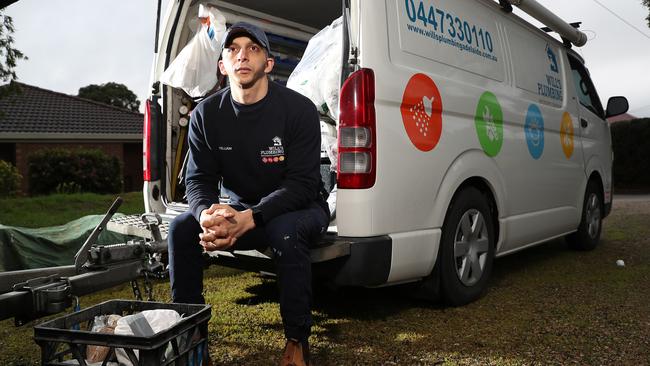
Master Plumbers SA chief executive officer Andrew Clarke attributed the surge in demand to a combination of the HomeBuilder grant, Covid-19 restrictions, and winter prompting more call-outs for stormwater issues.
“There’s an increase in new home builds and renovations,” he said. “Now (people) can’t travel, they’re effectively spending money on their homes.”
Mr Clarke said some plumbers “are banked up for three months” but he stressed emergency jobs were still tended to within 24 hours. He said there was no quick fix.
“The nature of the work is you can’t suddenly turn the tap on and there’s more tradies – it’s a skilled job,” he said.
Will’s Plumbing and Maintenance owner Will Nehme said the situation was making it difficult to recruit new talented tradies to keep up with demand, with businesses offering payrises and incentives to hold on to skilled workers.
“People will take it as it’s great for business and yes in a way but we’re working to the bone – everyone can’t keep up,” he said.
“This is a great economy to grow a business but the problem is we can’t find workers – it’s a double-edged sword.”
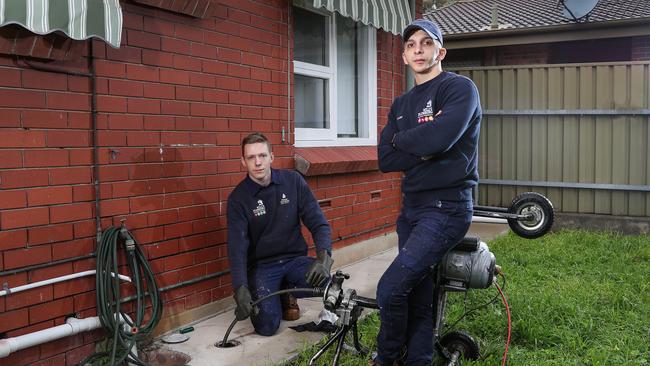
Mr Nehme urged people to be patient when seeking tradies.
“All I can say to customers out there is, don’t compromise on tradesmen because the ones who are busy and putting you on a waiting list, they are good,” he said.
Carpenter and builder Nathan Thomas said he had been carefully managing his workload to ensure clients weren’t waiting too long for their jobs to be completed.
“I’m getting calls for five jobs a day that would take me three months to do,” he said.
Coastal Plumbing and Gas owner Luke Belfrage said “you make hay while the sun shines but at the same time we’re absolutely run off our feet”.
“I think most tradies are trying to keep up and the worst thing for us is letting people down, but we’ve only got so many hours in the day and so many guys in the team,” he said.
Mr Belfrage also said timber and steel shortages were also wreaking havoc within the industry.
“It’s busy now but it may all dry up pretty quickly if we can’t get supplies,” he said.
Timber shortage, HomeBuilder put plans back a year
By Renato Castello
Customers can expect to wait up to an average nine months longer to build a new house amid the state’s worsening timber crisis that is crippling the industry and raised the spectre of imminent job losses.
Housing Industry Association SA executive director Stephen Knight said people who signed a contract today could expect to be waiting 18 months to move into a new home owing to chronic delays.
“That’s a delay of about six to nine months over and above what would be an average time to build,” Mr Knight, who represents SA’s large volume house builders, said.
“Delays are across the board, land ready to build on is not just being delayed by labour shortages but also wet weather is having an impact.
“(There are delays with) design and drafting, engineering, development approvals, a shortage of tradesman and of course materials.”
A major concern is the shortage of structural timber caused by an unprecedented housing demand driven by low interest rates, government stimulus and global demand for timber.
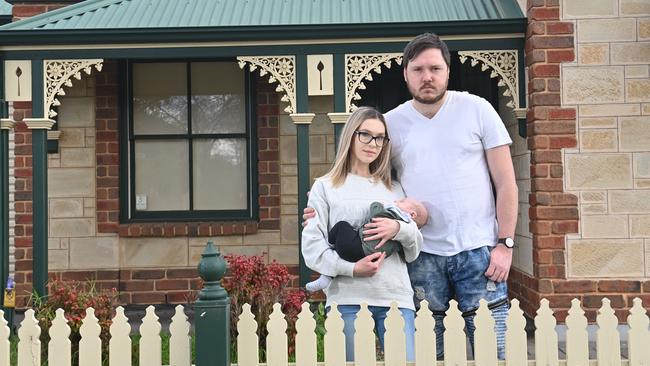
The director of an Adelaide building company, which builds about 100 houses a year, told The Advertiser his firm had poured slabs for 45 houses but can not get timber until April.
“We’ll probably have to cut down on staff, retrench a few, there could be a whole lot of repercussions,” he said, speaking on the condition of anonymity. “I was producing houses in a 20 week build time, now it’s taking 40-45 weeks.” He also said he knew of several small builders that would go “belly up soon” because they can’t get timber.
Another builder, also speaking on condition of anonymity, said his average timber cost to build a house had increased from $30,000 to $45,000.
“Everyone is haemorrhaging,” he said. “Politicians need to work harder to get timber off Kangaroo Island.”
The Master Builders SA, South Australian Forestry Products Association and Kangaroo Island Timber Plantations are sweating on a decision from the federal government to provide a $2m subsidy to transport bushfire-damaged logs from KI for processing at Jamestown with the potential to build 10,000 houses.
Master Builders SA chief executive Will Frogley said the timber needed to be “unlocked” as soon as possible.
“That’s a definite game changer but without urgent action the consequences will be dire,” he said. “Thousands of job losses, insolvencies and longer build times are all preventable but the clock is ticking and it’s getting close to midnight.”
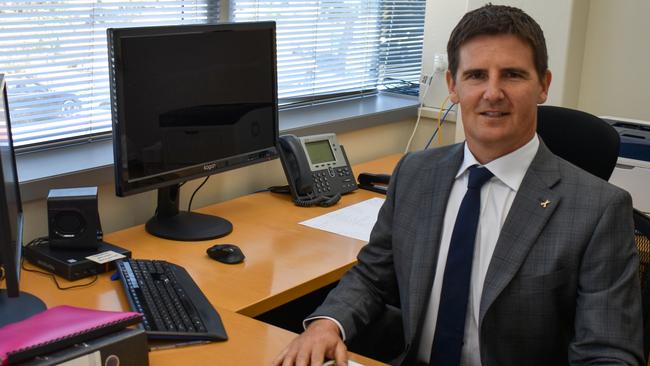
SA Forestry Minister David Basham told a state parliament estimates hearing on July 29 that no transport agreement had yet been reached with the federal government. But he said it would be expected the state government’s contribution could be “millions”.
Federal Assistant Forestry Minister Jonathon Duniam said in a statement the government was committed to supporting the forestry industry including on KI. His office did not clarify if the government would back the transport subsidy.
Erin Winchester, 24 and Michaek Furtak, 29, who qualified for a $25,000 HomeBuilder grant, have faced lengthy delays for site works to begin so they can start construction on their fist home at Angle Vale’s Lovegrove estate.
The pair paid a land deposit a year ago, signed a build contract in November and had expected to be in their house by June this year. Instead, Ms Winchester said civil works have been repeatedly delayed due to weather, with the latest update that site works would be completed next month.
“The constant delays have caused us uncertainty as to when our house will be completed,” the Mawson Lakes resident said. “We are renting currently so renewing the lease on a short-term basis may not be approved. I am definitely concerned there will be more hold ups with material shortages.”
Steeling for building expansion
By Renato Castello
A South Australian steel-frame manufacturer will spend $500,000 expanding production and its workforce in response togrowing demand due to the timber shortage.
Maxispan’s managing director, Craig Fleming, said the Northfield company had in the past year taken on more than 30 new customerswanting to build steel-framed houses.
“At the start, it was the HomeBuilder grant that generated a lot of interest,” he said.;
“Then, off the back of the timber shortage, we were receiving calls from builders that hadn’t been interested in steel before.
“Our (order) book is pretty well full and has been for two to three months.”
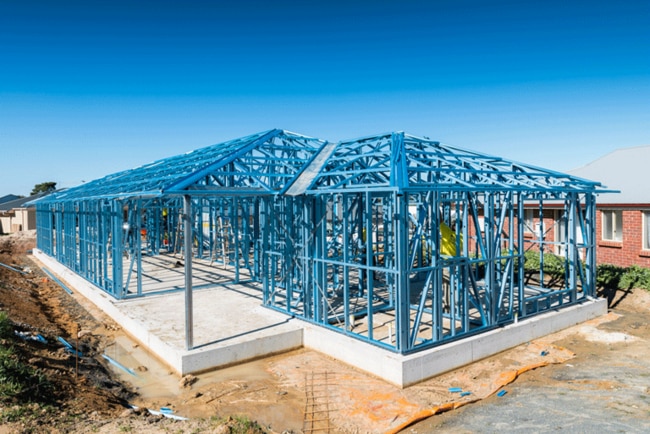
Mr Fleming said the company would employ an extra five staff when it installed an additional roll former by the end of theyear to produce frames for an 100-125 houses a year. He said that in the past financial year the company had delivered 350houses.
“Our main concern is that when we get our third machine and increase our output that we get the steel to feed it,” Mr Flemingsaid.
“Additional support for the steel-frame industry would be welcomed in order to promote some long-term growth of the productionworkforce and manufacturing facilities right here in Adelaide.”
He said he could not see housing demand slowing for the next “12 to 18 months”.





